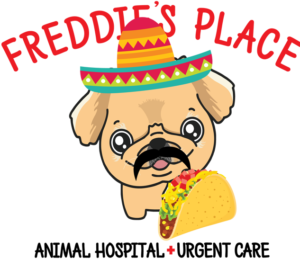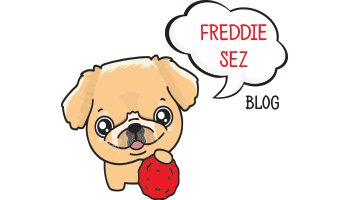How Your Dog uses Their Keen Sense of Smell
 Comedian George Carlin once quipped “You can pick your friends, you can pick your nose, but you can’t pick your friends nose!” In the canine world it’s slightly different, “You can pick your friends WITH your nose, and then lick theirs!” For your dog, their nose is much more than just the prominent feature on their face, it’s their key to unlocking the world and, it can save their life.
Comedian George Carlin once quipped “You can pick your friends, you can pick your nose, but you can’t pick your friends nose!” In the canine world it’s slightly different, “You can pick your friends WITH your nose, and then lick theirs!” For your dog, their nose is much more than just the prominent feature on their face, it’s their key to unlocking the world and, it can save their life.
With a single inhale with their powerful honkers a dog can pick up a scent and instantly glean a virtual ton of information. In that magical whiff, they know if another dog is in the area, if they are a familiar friend, what gender they might be, if they are having a bad day, if they are a threat, or if they are sick. Humans… we can determine if something smells good or we are offended by it. Humans lean on their vision to do most of the work, and vision is somewhat limited. Dogs get a nostril preview long before they can see where it came from.
Dog noses are somewhere between 1,000 and 10,000 times more powerful than any human… regardless of the persons nose size. Their mighty schnoz has over 100 MILLION sensory receptors that send detailed information of what’s in the air to over a part of the brain that interprets the smells and makes logical dog sense of them. That part of the brain is over 40 times larger than the human equivalent section of the brain. That “look at the big brain on Brutus” section that is in their cranium also triggers a dogs “scent memory” and helps them remember important things about the specific smell, things like “friend or foe” and who was the leader (more dominate) in their last encounter.
The use of amines (a naturally occurring chemical from animal tissue that are in hormones, proteins, & vitamins) and acids in the air are registered and decoded by your dogs brain, unlocking a wide variety of information from a single inhale. This is why dogs get personal and go “nose first” into private areas of other animals… and people. Have you ever read a story that details a dog meeting a person who they haven’t seen for years and having instant recognition or memory of that individual? It’s all in what the nose intakes and sends to the brain… the dog actually calls upon matching the distinctly familiar smell to a memory, then to the person in front of them. We can honestly tell you that we don’t remember how our 7th grade math teacher smelled… but our dog probably would, if they had met them.
Dogs remember the smells, meaning that when your dog detects another canine they will almost instantly know if they acquainted, have been friendly, what the dog recently ate, if they have changed diets, if they are sick or stressed. If you take them to a new and unfamiliar location, like a dog park, a forest trail, or even the pet store, your dog can get reams of information about the other animals that have been there before them just by taking the time to get to know them from the markers they left behind. This is why you shouldn’t rush your fur buddy along if they are having a “sniff festival” while you’re on a walk. Chances are they’ve caught the scent of someone they know, or want to know, and they are taking extra time to catalog the specifics in case they pick up that trail again… or the new animal crosses their path.
Have you ever had your friends dog, or a strange dog, or just a rando dog on the street, aggressively sniff out your pants leg, or chest? They can smell other animals you’ve come in recent contact with and they are making mental notes of they new potential friend or foes. They can decode the information down to the area they live by matching like smells along their journey. If you say “I know that smell” when you come across a familiar scent, multiply that by 10,000 times and you can step into the fragrant world of a canine.
Here’s another crazy fact that isn’t widely known or understood by the average dog parent… dogs have two nostrils (no, that’s not the cool fact), and each nostril works independently from the other. This allows the canine to hone in on direction and location, like a Google Map in their head. Research shows that we humans have even more unique smells to your fuzzy friends than other dogs. A dog doesn’t need to SEE you to sense that you have been in an area, or are close to where they are located. Even more interesting is that a dog smells your mood. If you are scared, stressed, anxious, or happy, your dog can sense that through their noses. Humans secrete odors that other humans can’t smell, but your dog can. Your dog can also recognize increased adrenaline, an increased heart rate, or if you are having a panic attack… markers for all these types of emotionally driven changes are in your blood or sweat and your dog can smell them. So stop trying to pull one over on your fur kids, they already have you figured out and can tell if you’re lying.
Canines use a special and unique part for their internal smelling system to route certain smells directly to the brain, bypassing other senses. The “Jacobsen’s Organ” is located inside a dog nasal cavity and opens into the roof of the mouth. It’s tucked behind the upper incisors and you likely wouldn’t know if if you saw it. This built in secondary olfactory system actually allow a dog to detect, catalog, and remember when the animal comes in contact with substances that have no odor at all. Use of the Jacobsen’s Organ is key in choosing a mate and the breeding ritual. A newborn puppy is born with enhanced smell from this organ, it allow them to recognize their mother in a room full of female dogs by seeking out her milk. Even if there are several nursing females in the room, a puppy can pick out their mothers unique scent. Watch your dogs in new or unfamiliar territory. You possibly will see their lips curl, their nostrils flair, or their mouth slightly open. All these are signs that the Jacobsen’s Organ has been engaged and is working with their normal sense of smell to figure out the new area and who is, or has been, around.
Have you ever wondered why a dog nose is wet? Believe it or not, this is also part of the dogs fantastic sense of smell. A wet nose will capture scent particles in the air, trapping them for the smelling system to send on to the brain for evaluation and cataloging. This is why your dog will wet their nose with their tongue if it is dry… nobody wants to miss the action in the air due a dried-out snout.
The amazing smell center in dog can even help their humans who are sick. A canine can sense certain types of illness or disease in people. Dogs can smell cancer on a persons breath, or can detect when a person with diabetes has low blood sugar. Certain dogs are trained to use their noses in even more targeted ways. Scent tracking dogs are used by the police in manhunts or to find missing people. Others can sniff out drugs or dangerous explosive devices. If you remember, in the aftermath of 9-1-1, dog were used to find living, and deceased, people trapped under the rubble. Using dogs as “partners in smell” has benefited their human counterparts in unbelievable and fantastic ways.
As we mentioned before, your dog knows YOU by smell. You are unique in their nose (and eyes), which means they will act different towards you than they do to a stranger. They simply dig the way you smell, even if its bad! So the next time a dog gets “nosy” with you, just remember that they are doing it out of true love.
You can help your dog’s olfactory system work better by assuring they get plenty of vitamin A, which is key to a healthy and happy sensory system. Vitamin A can be found in healthy vegetables like carrots, eggs, and organ meats (liver or kidneys). You can also give your dogs sense of smell a tune-up by taking them on walks to new and different areas. A break from the “same ol’, same ol’” will light up their senses and make that smell system go to work detecting and cataloging all the new and strange scents in the area. Again, show some patients on walks. If your canine take a long time to sniff an area out, its because they’ve either come across something new and strange, or found a long lost friend. Why be a killjoy, Elroy?
That’s our journey into the fantastic world of your dogs nose, brain and the system that ties them together. We hope you learned as much as we did from the information. Who knew it was so sensitive, unique, and awesome. Can you imagine how their brains must light up every time their olfactory system is engaged. Humans are playing nose checkers while your dog is mastering nasal three-dimensional chess.
March 21st is the first day of Spring, so be prepared by assuring your fur kids vaccines and flea/tick medications are up to date. Also remember that Easter is hopping down the bunny trail, so keep in mind that there is a long list of “bad” foods that your pets should not have. For a list of those items, use this handy link; Easter Foods that are Dangerous for Dogs (dsda.org)
We’ll be back next week with another interesting topic in our weekly Dog Blog. If you dig what we posted today, consider checking out the Blog Archive Library on our web home. There are dozens of blogs that cover a variety of topics about pets, pet illness, and pet lifestyle. We’d love you to read as much as you want and freely share with anyone you think would find value.
Till we meet again here next week please remember to get good rest, try your best, be patient if your given a test, don’t let bad things sit on your chest, and always be Pet Friendly, FreddieSez!
Blog research from these internet sites,
American Kennel Club (akc.org)





Leave A Comment